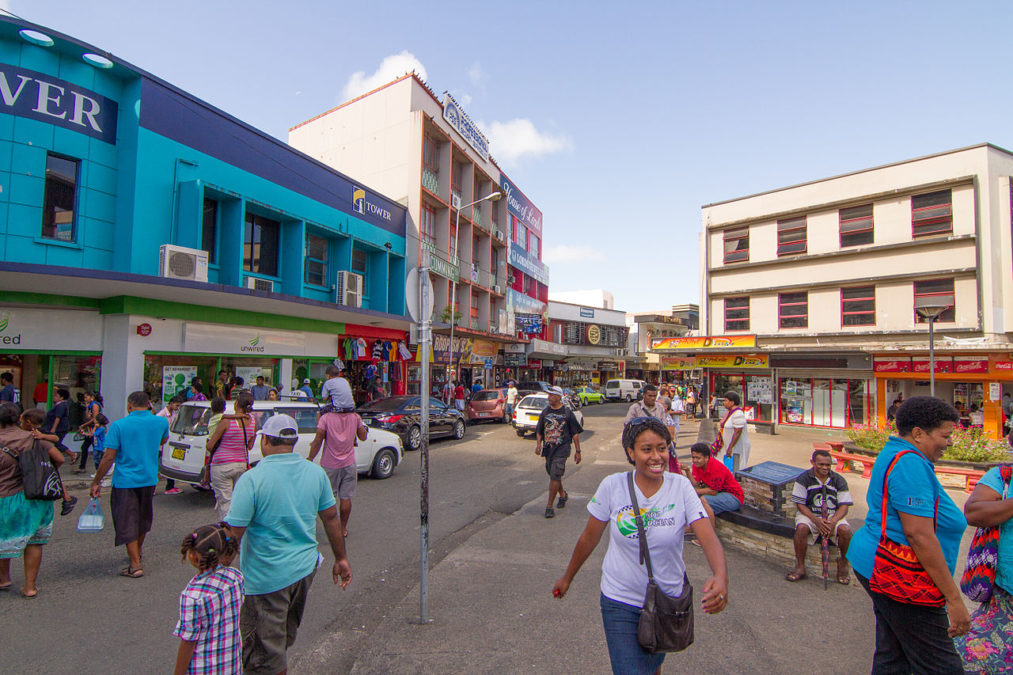
This post was written by A4AI Asia-Pacific Regional Coordinator Anju Mangal.
Joining the Web Foundation team as a Pacific islander has been an interesting socialisation experience and a great learning process. As a woman passionate about the ICT sector and the Internet Governance process, it’s been an important journey to learn about the work and tools used by my new colleagues to advocate for policy change and closing the digital divide.
I’ve joined the diverse and dynamic Alliance for Affordable Internet (A4AI) team at a crucial time when the Asia-Pacific region records some of the highest digital divides on the continent. Targeted interventions are needed to speed up progress and I am fortunate to work with colleagues and key experts in the region to facilitate policy and regulatory dialogues and drive action that leads to meaningful connectivity and affordability.
The Asia-Pacific region can benefit largely from meaningful and affordable connectivity. However there remains a number of barriers to achieving this. Namely, three factors continue to hinder digital development in the region: geographical challenges such as island archipelagos, the growing digital gender gap and broadband affordability. As a Pacific islander, connecting people who do not have the opportunity to be online is a top priority for me especially those living in rural and remote communities.
The Asia-Pacific region is unique and diversified, surrounded by a luscious, natural environment which spreads across the Pacific Ocean. Geographically, it has large populations with dispersed island archipelagos, particularly in the Pacific areas. The Fiji submarine sea cable system is one that connects two big islands but not other islands due to the high costs and investments. Additionally, it can be challenging for internet service providers to maintain infrastructure and communications during natural disasters, which occur often. Despite the advance of new emerging technologies, the region still suffers from a lack of affordable and meaningful access to the internet in part due to these geographical challenges.
Further, the gender gap is still widest in South Asia at 51%. In Bangladesh and Pakistan, there’s still a lack of family approval for women to be online. In all Asian countries surveyed for the GSMA Mobile Gender Gap Report, women were less likely than men to own a smartphone. The biggest barrier to mobile internet adoption across the countries surveyed in Asia, for both women and men is affordability, literacy and digital skills. There’s still a lot to be done to bridge the gender gap and ensure that women have access to affordable internet.
Our 2019 Affordability report also shows Asian countries are progressing towards affordability but the scores still remain lower than the global average. At least 16 out of 25 Asian countries have affordable access to the internet. And only 15 countries outline targets of connectivity in their broadband plans.
Many vulnerable people, such as those living with disabilities, in developing countries have lower incomes and cannot afford expensive internet rates or expensive assistive technologies. Access to affordable internet access creates important opportunities to close the digital divide, particularly for women and girls, rural and remote communities, and persons with disabilities.
In order to foster an environment that allows for meaningful and affordable internet in the Asia-Pacific region, it’s important to challenge the mindsets of the people in-charge of making key decisions. Introducing and encouraging the multistakeholder coalition model can help bring more Pacific islanders online. A4AI’s multi-stakeholder coalition model, aims to bring together stakeholders to participate in dialogue and policy decision-making processes to make the internet more accessible to people around the world.
In my role at A4AI, I aim to build an open collaborative process with stakeholders from different sectors, to design locally driven policy solutions, advance healthy market competition, develop flexible and forward looking policy and regulatory instruments and encourage public consultation and transparency that will help foster increased connectivity in the Asia- Pacific region.
I very much look forward to engaging with key players and experts in the Asia Pacific region and coordinating events and activities that use a multi-stakeholder process to determine the best solutions and strategies to tackle the digital divide in the region. Observing the various interactions and team dynamics, as well as understanding the cultural and political context and who has the most influence is imperative. As the Asia-Pacific lead, I aim to create successful coalitions in the region and I hope I can count on all players to build a successful movement of A4AI members and partners who together advocate for the policy frameworks that will support digital development and opportunity to the people in the region.
There are also several tools and resources at disposal for the benefit of the Asia Pacific community, such as the recently launched A4AI Rural Broadband Policy Framework: Connecting the Unconnected report. This is especially important given the number of unconnected populations living in rural areas, about 14% in rural areas compared to 42% in urban areas among Global South countries.
Again, collaboration amongst different players and organisations can be powerful and I hope my Asia-Pacific colleagues will join me to continue to amplify A4AI’s efforts in the region. We need a sustainable, collaborative and collective effort in bridging the digital divide in Asia-Pacific. If we all work together, we will go a long way toward bridging the digital divide in Asia-Pacific. I hope to find common ground to drive change and continue to build trust in key stakeholders, especially across great distances.
I am ready for this chapter and hope you are ready to join me!
For more updates on our work, follow us on Twitter at @a4a_internet.
Leave a Reply
